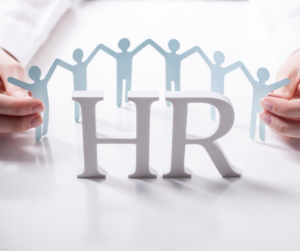
by admin | Oct 4, 2023 | Hot Topics, Human Resources
 Pushback on Remote Work
Pushback on Remote Work
Nowadays, many employers are insisting that workers return to the office in full force. Last week, HR Exchange Network reported on Goldman Sachs enforcing a five-day RTO rule. The Street recently reported on how Dimon longs for the same at JPMorgan Chase. This is not new news. Some have suggested the big banks are concerned about compliance with However, The Street speculates that Dimon is most interested in strict RTO as a result of the organization’s real estate investments.
Walmart Lowers the Minimum Wage
Apparently, Walmart is paying some new hires less than it was paying others three months ago, according to the Wall Street Journal. The writer suggests that this is a sign that companies are trying to cut labor costs after significant wage increases during the Great Resignation. Most new hires will now earn the lowest possible hourly wage for their store.
“The wage-structure change comes after Walmart and other large employers have for years steadily raised wages and added benefits to attract workers in a tight labor market. The retailer’s latest move suggests that the stresses companies are facing in trying to find employees are easing and that they need to find ways to offset those wage increases,” according to WSJ.
UAW May Strike
The summer of strikes might just turn into the fall of strikes. The United Auto Workers (UAW) told General Motors that their proposal was insulting, according to CNBC. The contract for GM’s 46,000 UAW-represented workers included a 10% increase in wages. But the union rejected it and within days the UAW may go on strike.
“Despite the proposed wage increase being the largest under a UAW contract since 1999, it still falls far short of the union’s demands of a 40% hourly pay increase, a reduced 32-hour workweek, a shift back to traditional pensions, elimination of compensation tiers, and restoration of cost-of-living adjustments, among other items on the table,” according to CNBC.
Millennials Are the Hybrid Workers
LinkedIn is sharing data points from its latest Workforce Confidence survey, and it showed a difference in the way generations are experiencing work at the moment. About 20% of Millennials, compared to 17% of Gen X and 15% of Baby Boomers, are hybrid workers.
Cybersecurity Sees Layoffs
Cybersecurity was once considered a safe role to have because of the great necessity to protect data and technology from breaches. However, in the last month, nine cybersecurity companies have laid off employees, according to Axios. IronNet, Malwarebytes, Fortinet, NCC Group, Rapid7, Dragos, HackerOne, and Bishop Fox are among those that cut jobs. The publication reported that the companies have cut between 10% and 20% of their workforce, which amounts to hundreds of layoffs.
By Francesca Di Meglio
Originally posted on HR Exchange Network

by admin | Dec 26, 2022 | Human Resources
 The pandemic and job market have made it difficult for employers to attract and retain talent, negatively impacting operations and profitability.
The pandemic and job market have made it difficult for employers to attract and retain talent, negatively impacting operations and profitability.- Mineral’s Healthy HR framework shows you what companies with high productivity, morale, and engagement have in common.
- The Healthy HR framework is built on performing well on all four of the following pillars: thoughtful compensation and benefits, good work-life balance, the potential for career growth, and appropriate workload.
- On average, 70% of organizations are researching competitors and looking to improve their compensation packages to attract and keep talent.
These past few years have been anything but “business as usual.” From lockdowns to resignations, new variants and economic uncertainty, companies have been forced to navigate these challenges with no roadmap. While companies had to take their own path, some have faded, others survived, and a few – interestingly – even thrived.
But could account for these differences in outcome? We wanted to do a deep dive to find out.
In February 2022, Mineral surveyed 2,644 senior HR professionals in the United States. We sought to uncover what businesses with high performance during the pandemic had in common with respect to what their HR departments chose to prioritize. Our study indicates that revenue and productivity gains are tied to employee morale. How well a company treats its employees corresponds to its ability to attain business growth. We translated our data into a framework to help businesses like yours unlock the connection between strong employee morale and increased revenue and productivity. We call this framework Healthy HR.
The Healthy HR Framework
Companies that grew in both revenue and productivity had four things in common. These four indicators, which are all tied to employee morale, make up what we call Healthy HR. These indicators are:
- Thoughtful compensation
- Good work-life balance
- Potential for career growth
- Appropriate workload
Based on how well organizations perform in these areas, they are rated as either Weak, Average, or Strong. Weak organizations do not perform well in any category, while Strong businesses do well in all four. Our results found, unsurprisingly, that Strong organizations are most likely to succeed in increasing productivity and revenue even when faced with macro-environment challenges.
But the amount of business value Strong organizations received did may surprise you! Strong organizations saw real, impactful improvements to their bottom line – and in more places than just the bottom line. Our study found that 68% of Strong performers saw an increase in employee morale, despite the challenges of the pandemic. Weak organizations, on the other hand, identified a 13% decrease in employee morale.
Healthy HR doesn’t just happen, however. It requires a culture of investment in HR and proactive efforts.
Here is what our State of HR survey found on how Strong companies perform in the Thoughtful Compensation and Benefits category and how you can imitate their success.
How Strong Healthy HR Companies Package Thoughtful Compensation & Benefits
Pay has always been one of the most important factors for employees. However, salary isn’t the only component of compensation. Health benefits, paid time off, and bonuses also make up the total compensation package. But how are strong Healthy HR companies adjusting their compensation and benefits packages?
We found that roughly 60% of small organizations offer flexible remote and hybrid work options and proactively review market wages to update their compensation. This small business movement is mirrored by over 75% of large organizations doing the same.
Strong companies are broadly putting efforts toward meeting their employees’ compensation and benefits expectations. Our survey found that:
- 76% proactively review market wages and update internal targets
- 75% consider employee quality of life during compensation decisions
- 73% offer very flexible working hours with all employees
- 70% offer flexible remote and hybrid work options
- 64% tailor benefits packages to specific employee situations
Strong Healthy HR organizations are more than 10 times more likely to tailor benefits to specific employee situations than weak organizations. This can include offering adjusted working hours to accommodate family needs or providing additional time off to employees that need it. Employers in this job-seekers market are adjusting to their compensation practices. Is yours keeping pace?
What Your Organization Should Do
Not every organization is able to increase employee compensation or provide new benefits. Sometimes there are budget limitations. At other times, recruiting and staffing could be pain points that limit growth. Further, not every company can take advantage of every benefit (some organizations, like services and restaurants, always require in-house staff). However, proactive steps toward Healthy HR can begin even with small steps.
Whether you’re a growing organization with little to no funds available to alter your compensation or benefits, or need outside the box thinking, here are some ways to enhance your compensation practices:
- Be aware of trending benefits for both your employees, location, and industry
- Consider polling employees on the type of benefits that interest them
- Offer one unique benefit that ties in with your culture and values
- Examples include stipends to support small businesses, allow bereavement periods for the loss of a pet, charge accounts for snacks or coffee at employees’ favorite gas stations, recess time, blue light lens glasses, game tickets, or vouchers for spas and massages
- Establish guidelines around how and when the company discusses pay and benefits with job candidates and employees
- Track utilization rates of your current offered benefits
Another key aspect for helping organizations improve in Healthy HR: focusing on mental health. We found in our research that every Strong organization placed a heightened focus on employees’ mental health. Strong posture companies were 11x more likely to prioritize this and tried to support it through the pillars of Healthy HR – including thoughtful compensation and benefits. From fostering a culture around wellness (71%) to revising procedures to empower managers and supervisors to check in (68%), promoting mental wellness through the compensation pillar could hold the key to elevating your organization’s Healthy HR standing.
The job market and pandemic have forced many companies into a reactive posture. But organizations with Healthy HR showcased their resilience, agility, and endurance. As it’s always a matter of when – not if – the next crisis will impact your organization, our research has revealed that a surefire way to withstand it is by proactively investing in Healthy HR.
By Alexander Lahargoue
Originally posted on Mineral
by Johnson and Dugan | Feb 14, 2020 | Employee Benefits, Human Resources
City and County of San Francisco Minimum Compensation Ordinance
Any company with 5 or more employees and contracts with the City and County of San Francisco needs to be aware of the wage law that has been in effect for several years, and the recent amendment that now includes stricter enforcement. The Minimum Compensation Ordinance (MCO) covers most City service contractors as well as tenants at the San Francisco International Airport. The law generally requires covered employers to provide to their covered employees:
- No less than the MCO hourly wage in effect:
For contracts entered into on or after October 14, 2017, the minimum hourly compensation rates effective July 1, 2019 are:
- $17.66/hour – For-Profit entity
- $16.50/hour – Non-profit entity
- $16.50/hour – Public entity
For contracts in effect prior to October 14, 2017, the minimum hourly compensation rates effective July 2, 2019 are:
- $15.59/hour for work performed within the City of San Francisco (SF Minimum Wage)
- $10.77/hour for work performed outside of the City of San Francisco
Rates are subject to change, refer to the OLSE website for the most current information: www.sfgov.org/olse/mco
- 12 paid days off per year (or cash equivalent)
Time off allowed for vacation, sick leave, or personal necessity, and part-time employees are allocated paid days off on a prorated basis.
- 10 days off without pay per year.
Days off of for part-time employees are allocated on a prorated basis. The PTO accrual rate is 0.04615 hours per hour worked and can be used as vacation or sick leave. PTO hours are vested and can be cashed out at termination.
Other requirements:
- The employer must post the Minimum Compensation Ordinance poster in a location where employees can read it easily.
- Employees must be provided a Know Your Rights form for signature.
Failure to meet the requirements could result in penalties, with a look-back period of 10 years when a complaint is filed. If you are not in compliance and want to avoid penalties, there are options to minimize your liability. Any audit based on a complaint will include a review of your employee handbook and your payroll records.
To review the November 21, 2019 amended rules, Click Here.

 Pushback on Remote Work
Pushback on Remote Work
